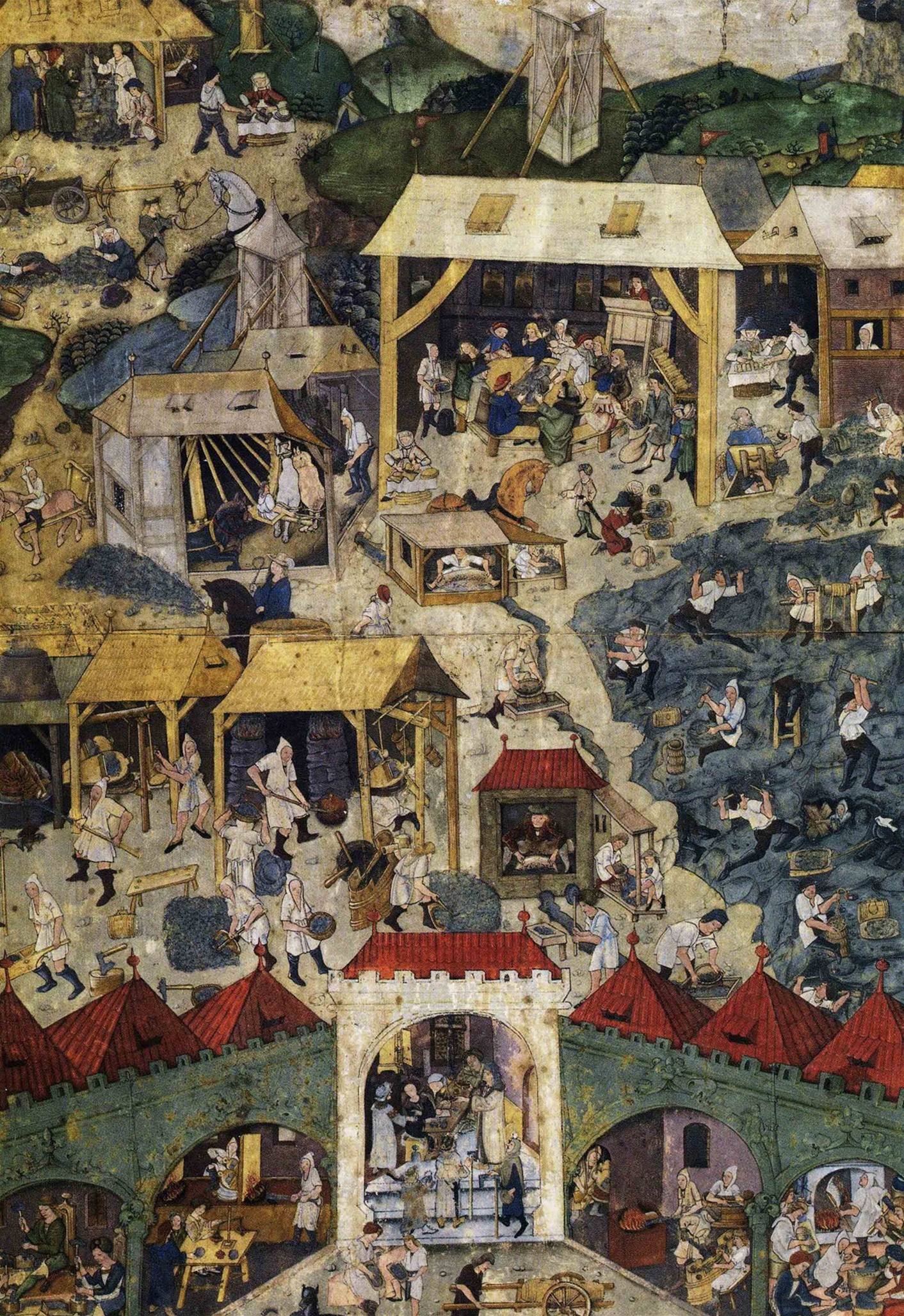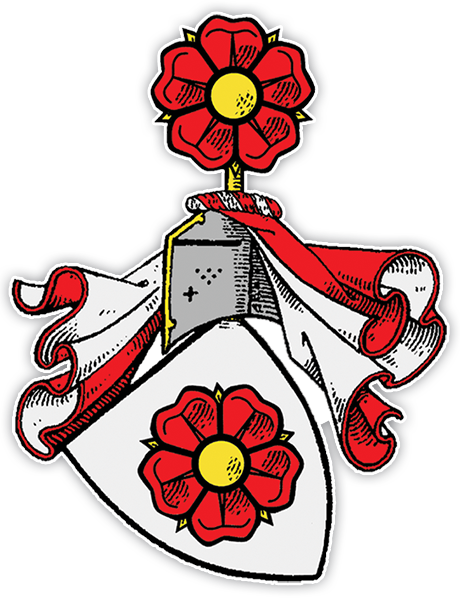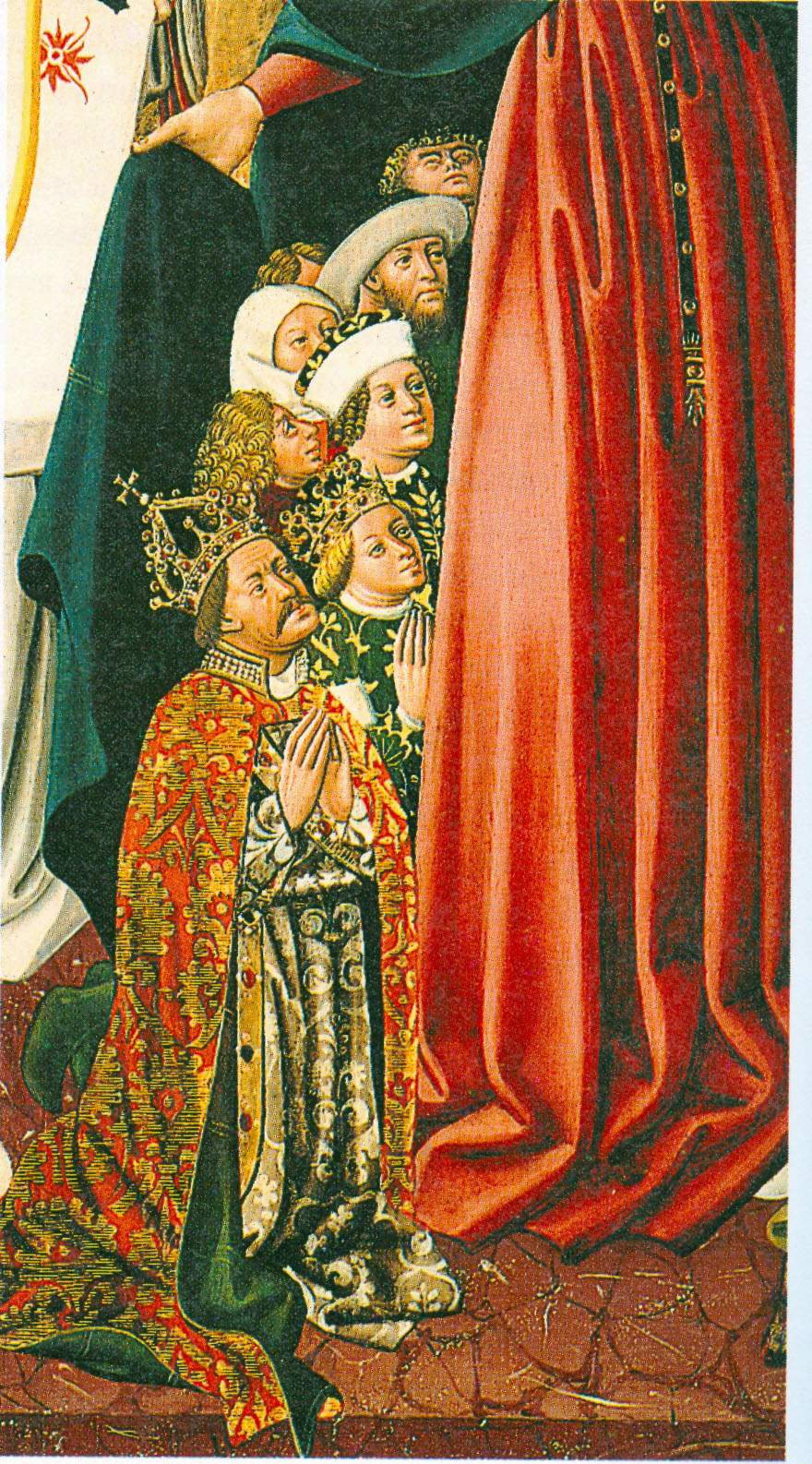|
George Of Poděbrady
George of Kunštát and Poděbrady (23 April 1420 – 22 March 1471), also known as Poděbrad or Podiebrad ( cs, Jiří z Poděbrad; german: Georg von Podiebrad), was the sixteenth King of Bohemia, who ruled in 1458–1471. He was a leader of the Hussites, however, moderate and tolerant toward the Catholic faith. His rule was marked by great efforts to preserve peace and tolerance between the Hussites and Catholics in the religiously divided Crown of Bohemia – hence his contemporary nicknames: "King of two peoples" and "Friend of peace". During the 19th century, in period of the so-called Czech National Revival, he began to be praised (even somewhat idealized) as the last Czech national monarch (in terms of ethnic awareness), a great diplomat and a courageous fighter against the domination of the Catholic Church. In modern times he is remembered mainly for his idea and attempt to establish common European Christian institutions, which is now seen as the first historical vision of ... [...More Info...] [...Related Items...] OR: [Wikipedia] [Google] [Baidu] |
Podiebrad Family
The Bohemian Poděbrady family ( cz, Páni z Poděbrad) was a noble family in Bohemia, arising from the Lords of Kunštát. After Boček I of Poděbrady, Boček of Kunštát (d. 1373) had acquired the Lordship of Poděbrady by marriage, he called himself "Boček of Kunštát and Poděbrady". The most prominent member of the family was George of Poděbrady, who was king of Bohemia. His sons were raised to imperial counts and Counts of County of Kladsko, Glatz. They founded the Silesian branch of the family, the Dukes of Duchy of Münsterberg, Dukes of Münsterberg ( cz, Knížata z Minsterberka). History Among the members of Poděbrady and Münsterberg branches of the family were some of the most important political figures in the Kingdom of Bohemia in the 14th through 17th century. Among their possessions were Poděbrady Castle, Poděbrady in central Bohemia and the eastern Bohemian dominions Litice Castle and Lordship of Hummel, Hummel and parts of the territory of the for ... [...More Info...] [...Related Items...] OR: [Wikipedia] [Google] [Baidu] |
Hussites
The Hussites ( cs, Husité or ''Kališníci''; "Chalice People") were a Czech proto-Protestant Christian movement that followed the teachings of reformer Jan Hus, who became the best known representative of the Bohemian Reformation. The Hussite movement began in the Kingdom of Bohemia and quickly spread throughout the remaining Lands of the Bohemian Crown, including Moravia and Silesia. It also made inroads into the northern parts of the Kingdom of Hungary (now Slovakia), but was rejected and gained infamy for the plundering behaviour of the Hussite soldiers.Spiesz ''et al.'' 2006, p. 52.Kirschbaum 2005, p. 48. There were also very small temporary communities in Poland-Lithuania and Transylvania which moved to Bohemia after being confronted with religious intolerance. It was a regional movement that failed to expand anywhere farther. Hussites emerged as a majority Utraquist movement with a significant Taborite faction, and smaller regional ones that included Adamites, Orebites ... [...More Info...] [...Related Items...] OR: [Wikipedia] [Google] [Baidu] |
Kutná Hora
Kutná Hora (; medieval Czech: ''Hory Kutné''; german: Kuttenberg) is a town in the Central Bohemian Region of the Czech Republic. It has about 20,000 inhabitants. The centre of Kutná Hora, including the Sedlec Abbey and its ossuary, was designated a UNESCO World Heritage Site in 1995 because of its outstanding architecture and its influence on subsequent architectural developments in other Central European city centres. Since 1961, the town centre is also protected by law as an urban monument reservation, the fourth largest in the country. Administrative parts The town is made up of twelve town parts and villages: *Kutná Hora-Vnitřní Město *Hlouška *Kaňk *Karlov *Malín *Neškaredice *Perštejnec *Poličany *Sedlec *Šipší *Vrchlice *Žižkov Geography Kutná Hora is located about east of Prague. It lies on the Vrchlice stream. The eastern part of the municipal territory lies in a flat agricultural landscape of the Central Elbe Table lowland. The western part lies i ... [...More Info...] [...Related Items...] OR: [Wikipedia] [Google] [Baidu] |
Litice Castle
Litice Castle (german: Lititz) is a castle in Záchlumí municipality in the Ústí nad Orlicí District in the Pardubice Region of the Czech Republic. History The steep slopes of the foothills of the Orlické Mountains gave the advantage of a strategic position to the gothic castles being founded there at the close of the 13th century. The high headland around which flowed the Divoká Orlice River was the site chosen just before the year 1300 by the Drslavic family to build up a castle which they named after their original family settlement in the Plzeň area. For a short span of time in the 14th century the Litice castle was owned by two Luxembourg rulers successively, John of Bohemia and Charles IV. In 1371 Boček of Kunštát, a Moravian noble, came with his family to settle at the castle. One branch of the family became naturalized in Bohemia through marriage and the purchase of the Poděbrady and Pardubice estates. The appearance of the oldest gothic castle was lost under ... [...More Info...] [...Related Items...] OR: [Wikipedia] [Google] [Baidu] |
Oldřich II Of Rosenberg
Oldřich II of Rosenberg (Czech: ; 13 January 1403 – 28 April 1462) was an important Bohemian nobleman who, after the Battle of Lipany, became a recognized leader of the Catholic lords in Bohemia. Biography Oldřich II increased the power of the Rosenberg family after taking advantage of the weakening royal power during the Hussite wars. Oldřich was initially sympathetic for the Hussite movement, a position influenced by his guardian Čeněk of Wartenberg. However, after the Hussites burned down the town of Sezimovo Ústí in 1420 and founded Tábor on the very northern border of the , Oldřich became a leading ally of Emperor Sigismund and acted as a negotiator and diplomat. Sigismund appointed him governor of the Bechyně region and Prácheňsko. Oldřich II was defeated in the Battle of Tábor and in the near modern day Malý Bor, and participated in the Battle of Vyšehrad in 1420. He found later military success in the Battle of Lipany in 1434 and saw to the destruction ... [...More Info...] [...Related Items...] OR: [Wikipedia] [Google] [Baidu] |
Ladislaus The Posthumous
Ladislaus the Posthumous( hu, Utószülött László; hr, Ladislav Posmrtni; cs, Ladislav Pohrobek; german: link=no, Ladislaus Postumus; 22 February 144023 November 1457) was Duke of Austria and King of Hungary, Croatia and Bohemia. He was the posthumous son of Albert of Habsburg with Elizabeth of Luxembourg. Albert had bequeathed all his realms to his future son on his deathbed, but only the estates of Austria accepted his last will. Fearing an Ottoman invasion, the majority of the Hungarian lords and prelates offered the crown to Vladislaus III of Poland. The Hussite noblemen and towns of Bohemia did not acknowledge the hereditary right of Albert's descendants to the throne, but also did not elect a new king. After Ladislaus's birth, his mother seized the Holy Crown of Hungary and had Ladislausknown as Ladislaus V in Hungarycrowned king in Székesfehérvár on 15 May 1440. However, the Diet of Hungary declared Ladislaus's coronation invalid and elected Vladislaus king. A c ... [...More Info...] [...Related Items...] OR: [Wikipedia] [Google] [Baidu] |
Hynce Ptáček Of Pirkstein
Hynce Ptáček of Pirkstein (1404 – 27 August 1444) was a Czech nobleman, the highest Hofmeister and Münzmeister In medieval and early modern Germany, the ''Münzmeister'' ("mint master", the Latin term is ''monetarius'') was the head or manager of a mint, a moneyer with responsibility for the minting of coins, or specie. His duties were defined differently a ... of the Kingdom of Bohemia and regent of Bohemia's royal cities. Life Hynce Ptáček of Pirkstein came from a side line of the noble . He was the son of Jan Ptáček of Pirkstein and Jitka of Kunštát. From 1420 he was in possession of Rataje nad Sázavou and he soon rose to the highest court master and mint master of the Kingdom of Bohemia and the acting regent of the royal cities. As a moderate representative of the Hussites he fought in 1434 in the Battle of Lipan on the side of Prague. After Sigismund, Holy Roman Emperor, Sigismund's death in 1437 he and George of Poděbrady, his protégé and future provincia ... [...More Info...] [...Related Items...] OR: [Wikipedia] [Google] [Baidu] |
King Of Hungary
The King of Hungary ( hu, magyar király) was the ruling head of state of the Kingdom of Hungary from 1000 (or 1001) to 1918. The style of title "Apostolic King of Hungary" (''Apostoli Magyar Király'') was endorsed by Pope Clement XIII in 1758 and used afterwards by all Monarchs of Hungary. The term "King of Hungary" is typically capitalized only as a title applied to a specific person; however, within this article, the terms "Kings of Hungary" or "Junior Kings" (etc.) are also shown in capital letters, as in the manner of philosophical writing which capitalizes concepts such as Truth, Kindness and Beauty. Establishment of the title Before 1000 AD, Hungary was not recognized as a kingdom and the ruler of Hungary was styled Grand Prince of the Hungarians. The first King of Hungary, Stephen I. was crowned on 25 December 1000 (or 1 January 1001) with the crown Pope Sylvester II had sent him and with the consent of Otto III, Holy Roman Emperor. Following ... [...More Info...] [...Related Items...] OR: [Wikipedia] [Google] [Baidu] |
King Of Germany
This is a list of monarchs who ruled over East Francia, and the Kingdom of Germany (''Regnum Teutonicum''), from the division of the Frankish Empire in 843 and the collapse of the Holy Roman Empire in 1806 until the collapse of the German Empire in 1918. Note on titles #The Kingdom of Germany started out as the eastern section of the Frankish kingdom, which was split by the Treaty of Verdun in 843. The rulers of the eastern area thus called themselves ''rex'' ''Francorum'' ("king of the Franks"), ''rex Francorum orientalium'' ("king of the East Franks"), and later just ''rex''. A reference to the "Germans", indicating the emergence of a German nation of some sort, did not appear until the eleventh century, when the pope referred to his enemy Henry IV as ''rex teutonicorum'', king of the Germans, in order to brand him as a foreigner. The kings reacted by consistently using the title ''rex Romanorum'', king of the Romans, to emphasize their universal rule even before becoming emp ... [...More Info...] [...Related Items...] OR: [Wikipedia] [Google] [Baidu] |
Sigismund, Holy Roman Emperor
Sigismund of Luxembourg (15 February 1368 – 9 December 1437) was a monarch as King of Hungary and Croatia ('' jure uxoris'') from 1387, King of Germany from 1410, King of Bohemia from 1419, and Holy Roman Emperor from 1433 until his death in 1437, as well as prince-elector of Brandenburg (1378–1388 and 1411–1415). He was the last male member of the House of Luxembourg. Sigismund was the son of Holy Roman Emperor Charles IV and his fourth wife Elizabeth of Pomerania. He married Queen Mary of Hungary in 1385 and was crowned King of Hungary soon after. He fought to restore and maintain authority to the throne. Mary died in 1395, leaving Sigismund the sole ruler of Hungary. In 1396, Sigismund led the Crusade of Nicopolis, but was decisively defeated by the Ottoman Empire. Afterwards, he founded the Order of the Dragon to fight the Turks and secured the thrones of Croatia, Germany and Bohemia. Sigismund was one of the driving forces behind the Council of Constance (1414–1 ... [...More Info...] [...Related Items...] OR: [Wikipedia] [Google] [Baidu] |
Albert II Of Habsburg
Albert the Magnanimous KG, elected King of the Romans as Albert II (10 August 139727 October 1439) was king of the Holy Roman Empire and a member of the House of Habsburg. By inheritance he became Albert V, Duke of Austria. Through his wife (''jure uxoris'') he also became King of Hungary, Croatia, Bohemia, and inherited a claim to the Duchy of Luxembourg. Biography Albert was born in Vienna as the son of Albert IV, Duke of Austria, and Joanna Sophia of Bavaria. He succeeded to the Duchy of Austria at the age of seven on his father's death in 1404. His uncle Duke William of Inner Austria, then head of the rivaling Leopoldinian line, served as regent for his nephew, followed by his brothers Leopold IV and Ernest the Iron in 1406. The quarrels between the brothers and their continued attempts to gain control over the Albertinian territories led to civil war-like conditions. Nevertheless, Albert, having received a good education, undertook the government of Austria proper on t ... [...More Info...] [...Related Items...] OR: [Wikipedia] [Google] [Baidu] |
Sirotci
The Sirotci ("Orphans"; german: Waisen), officially Orphans' Union ( cz, Sirotčí svaz), were followers of a radical wing of the Hussites in Bohemia. Founded in 1423 originally under the name Lesser Tábor, it consisted mostly of poorer burghers and some members of the lower aristocracy who joined with the commander Jan Žižka and the eastern Bohemian Hussites, the so-called Orebites (''Orebité''). After Žižka's death (1424), "orphaned" combatants adopted their new name. From 1424 to 1428, they were led by the priest Ambrož of Hradec and then by another priest, Prokop the Lesser. ''Hejtman'' Jan Čapek of Sány was elected as their military commander (1431–1434). Towns joined with the Union All towns are in Bohemia, unless otherwise noted. * Vysoké Mýto (german: Hohenmauth) * Čáslav (german: Tschaslau) * Kouřim (german: Gurim) * Kolín (german: Kolin) * Kutná Hora (german: Kuttenberg) (in condominium with the Taborites) * Trutnov (german: Trautenau) * Tachov (ger ... [...More Info...] [...Related Items...] OR: [Wikipedia] [Google] [Baidu] |









.jpg)
_-_Korunovace_císaře_Albrechta_II._za_krále_českého_roku_1438.jpg)
.png)